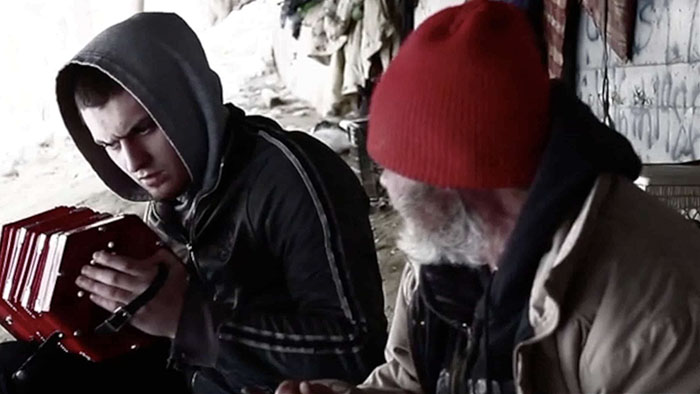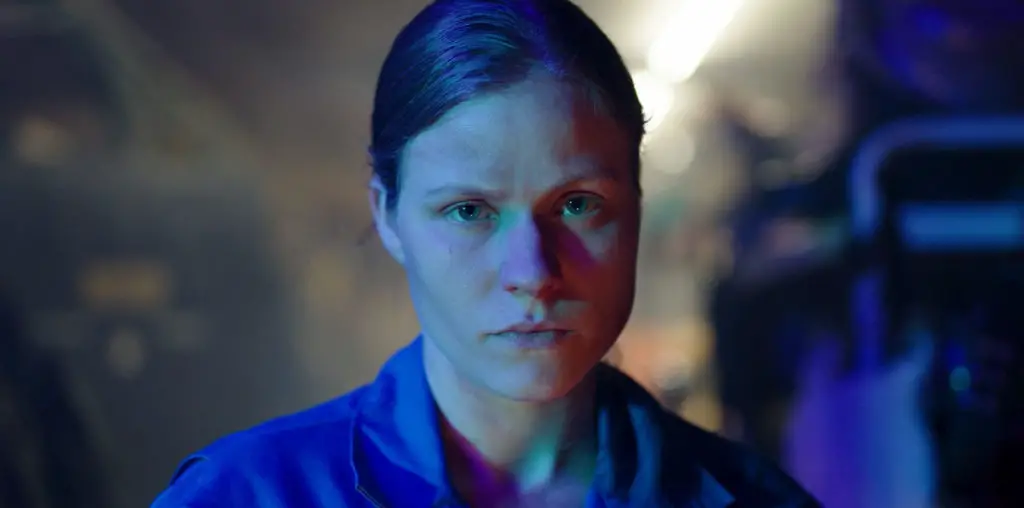
Nightcrawlers is a beautiful and terrifying documentary that follows Stephen McCoy as he seeks out and befriends people on the street in Boston during the early 2010s. It depicts vignettes captured on McCoy’s camcorder, which he had been regularly using since senior year of high school to document every aspect of his life. Some of the vignettes include an old woman hand painting a depiction of 9/11, a man playing guitar in a train station, a transgender woman detailing her struggles, and many parties held by his high school friends. Through these vignettes, the audience sees directly through McCoy’s perspective, gaining an understanding of his wants and needs through the camera. Recurring characters pop up expertly showing how McCoy ended up as a heroin addict and who led him there. However, the vignettes themselves are scattershot, never fitting one narrative or idea, merely documenting a variety of odd folk in Boston. As a reflection of a city or a life of experiences, it works well, but there is never enough time on each subject for use to get to know them on a deeper level. The title of the movie is ‘nightcrawlers,’ but in the end, it is really about McCoy.
Nightcrawlers is intriguing because it is not a documentary in a traditional format, just a collection of loosely connected home video recordings. It is a real collection of “found” footage that reminded me of a linear version of the multimedia performance piece My First Film by Zia Anger but is also reminiscent of the short film good kid m.A.A.d city and the feature Cameraperson.
The standout aspect of this movie is the editing by Luc Benson. There was most likely a ton of footage to parse through and depict a narrative. Still, Benson found the most impactful moments emotionally and contextually and then powerfully weaved them together. One of the boldest editing choices was to have the movie start at the end when McCoy is at his lowest point. This choice makes it immediately clear where the movie is going, providing valuable context to the vignettes later shown.

“…how McCoy ended up as a heroin addict and who led him there.”
McCoy uses the camera as a passive device, never making the fact that he is recording the emphasis at any moment. Each vignette is bursting with love and appreciation for so many different types of people, particularly the homeless. It’s clear McCoy wasn’t coming from the perspective of an outsider looking in to exploit homeless people or drug addicts for money or notoriety, therefore through the vignettes, I experienced a glimpse of a humanized and respected homeless and addict population rarely depicted in media.
Since watching the movie, I was fascinated by the psychology behind McCoy’s constant documentation of the world around him. This was occasionally brought up by people around him, particularly at parties, where those unfamiliar would be suspicious or curious, and his closest friends would dismiss it as ‘just something that Stephen does.’ At one point, McCoy even states that he knows every piece of machinery within the camcorder. This is only explored within the subtext of the movie, but gets to the heart of arguably the most critical question this movie poses, which is, ‘Why was all of this footage recorded in the first place?’ This question, along with an apparent reason for why McCoy became a heroin addict, goes unanswered throughout the film’s runtime, subsequently leaving the impact of the film dulled.
Unfortunately, I was left feeling as if McCoy’s story was incomplete. I think that the movie would’ve benefitted from more footage of McCoy’s struggle towards recovery from his addiction. Given that the film is 76 minutes, five more minutes of further closure wouldn’t hurt the overall pacing significantly. However, a movie that leaves me wanting more is good a problem to have. Despite this gripe, I felt a genuine connection with McCoy by the end, to the point that I shed a few tears, both of joy and pain. The absolute destruction of McCoy is on full display by the end, revealing the movie to be both a cautionary tale and piece of art determined to save its creator from being just another statistic.
"…the absolute destruction of McCoy is on full display by the end..."

